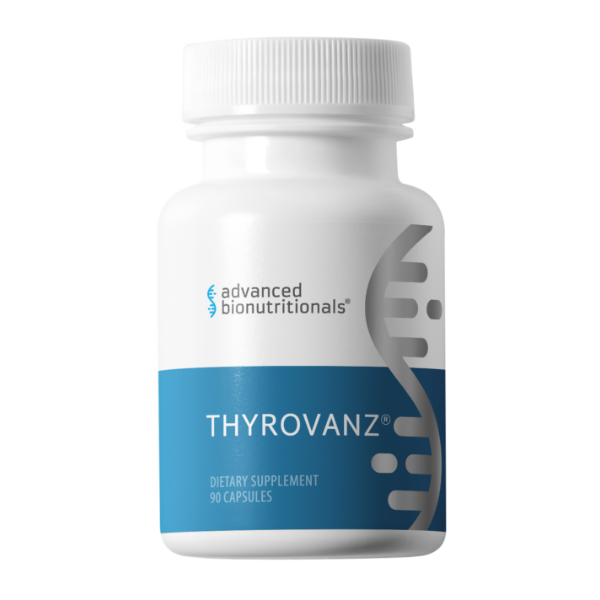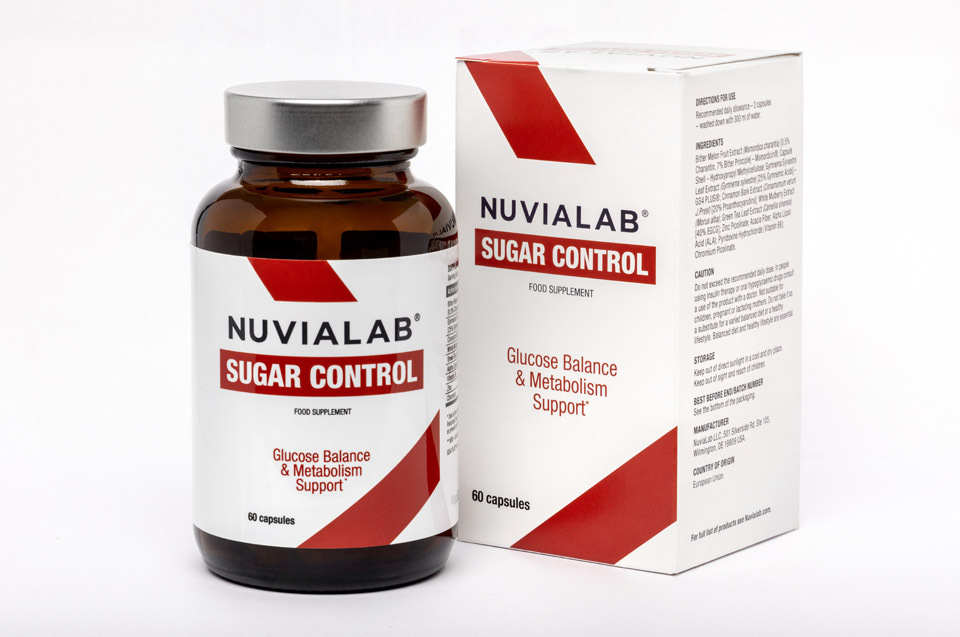High PSA levels can worry people because they’re often linked to prostate cancer. But, it’s important to know that high PSA doesn’t always mean you have prostate cancer. Many other things can raise PSA, like BPH, prostatitis, or some medicines or procedures.
If your PSA levels are high, it’s key to talk to your doctor. They will look into what might be causing it. They’ll consider your age, health history, and test results, like a DRE or biopsy. Talking about your situation with your doctor helps make a good plan for your health.
Understanding PSA and Its Role
Prostate-specific antigen (PSA) is a protein made by the prostate gland. It’s mostly in semen but some is in the blood too. The PSA test checks PSA levels in blood. It’s a key tool for finding prostate cancer early. But, high PSA levels can also mean other health issues, not just cancer.
What is PSA?
PSA is an enzyme from the prostate gland cells. Its job is to break down semen, helping sperm move better. Some PSA gets into the blood, where it can be tested.
The Importance of PSA Testing
The PSA test is key for checking for prostate cancer. It spots men who might have cancer before symptoms show. But, it’s not perfect. High PSA levels can also mean other issues, like a big prostate or inflammation.
Doctors look at PSA levels over 4 ng/mL to decide on more tests. Some start checking at 2.5 or 3. Most men without cancer have PSA under 4 ng/mL. Yet, about 15% of those with PSA under 4 might have cancer if biopsied.
There are different PSA tests, like percent-free PSA and complexed PSA. These help figure out prostate cancer risk. Tests like the Prostate Health Index and 4Kscore test also help assess cancer chances.
PSA Levels By Age Chart
As men get older, their PSA levels go up, even if they don’t have prostate cancer. This happens because the prostate grows more over time. The normal PSA levels change with age, with older men having higher values.
Below is the PSA levels by age chart according to the National Library of Medicine:
- 0-2.5 ng/mL: Normal for men ages 40-50
- 2.5-3.5 ng/mL: Normal for men ages 50-60
- 3.5-4.5 ng/mL: Normal for men ages 60-70
- 4.5-5.5 ng/mL: Normal for men ages 70-80
Most labs say PSA levels under 4.0 ng/mL are normal. But doctors look at the patient’s age when they check PSA test results. If PSA goes up a lot in one year, more tests might be needed.
Things like BPH, prostatitis, recent prostate procedures, urinary tract infections, and even ejaculation can make PSA levels go up. Knowing about psa levels by age helps doctors understand PSA test results better.
Benign Prostatic Hyperplasia (BPH)
Benign prostatic hyperplasia (BPH), or an enlarged prostate, is common in older men. It can raise prostate-specific antigen (PSA) levels. About 50% of men aged 51 to 60 years old and up to 90% of men over 80 are affected.
Men over 40, with a family history, obesity, heart disease, type 2 diabetes, lack of exercise, or erectile dysfunction, are more likely to get BPH.

Symptoms of BPH
Men with BPH may have symptoms like frequent urination, urgency, and trouble starting to urinate. They might also have a weak urine stream, need to urinate often at night, or experience pain while urinating. But, less than half of men with BPH show these symptoms.
Treatment Options for BPH
There are many ways to treat BPH, based on how bad the symptoms are and what the man prefers. These include:
- Watchful waiting: For men with mild symptoms, a “wait-and-see” approach may be recommended.
- Medication: Two types of drugs used to treat BPH are 5-alpha-reductase inhibitors and alpha-adrenergic blockers, which can improve symptoms in 30% to 60% of men.
- Minimally invasive procedures: Options like the prostatic urethral lift and photovaporization of the prostate can help relieve symptoms.
- Surgery: In some cases, more invasive procedures like transurethral resection of the prostate (TURP) or open prostatectomy may be necessary.
Managing BPH well can lower PSA levels and ease worries about prostate cancer. If you notice any BPH symptoms, talk to a healthcare professional.
Prostatitis: Inflammation of the Prostate
Prostatitis is when the prostate gets inflamed. It can be caused by a bacterial infection or other unknown reasons. This condition makes urination painful, hard, or more frequent. Treating it with antibiotics or other methods can lower PSA levels and check if it’s not prostate cancer.
Up to 50% of all males will get prostatitis at some point. It’s most common in men under 50 and still common in those over 50. Prostatitis doesn’t increase prostate cancer risk. But, it might make finding prostate cancer more likely.
- Prostate cancer is the most common cancer in males in the United States, after skin cancer.
- Black individuals have the highest death rates from prostate cancer, at 42 deaths per 100,000. Asian individuals have a rate of 8.8 deaths per 100,000.
- Some people can have both prostate cancer and prostatitis at the same time.
Treating prostatitis is key for prostate health. Most people with chronic pelvic pain syndrome (CPPS) feel better with the UPOINT system. Bacterial prostatitis might need 4 to 12 weeks of antibiotics. Acute cases might only need 14 to 30 days of antibiotics, sometimes given through an IV.
Home remedies like drinking lots of water, taking pain relievers, and using heat can help with prostatitis. But, they shouldn’t replace medical treatment. Prostatitis needs proper diagnosis and care for the best results.
Urinary Tract Infections and Irritations
Urinary tract infections (UTIs) and other irritations can make PSA levels go up. Symptoms of UTIs include burning or painful urination, cloudy or foul-smelling urine, frequent urination, and not being able to fully empty the bladder.
Symptoms of UTIs
- Burning or painful urination
- Cloudy or foul-smelling urine
- Frequent urination
- Inability to fully empty the bladder
Risk Factors for UTIs
Risk factors for UTIs include diabetes, kidney stones, and an enlarged prostate. It’s important to treat any UTI or irritation before getting a PSA test. This ensures accurate results.
Knowing how UTIs and other irritations affect PSA levels helps people work with their doctors. Together, they can find out why PSA levels are high and get the right treatment.
Is it possible to have prostate cancer without elevated PSA levels?
Yes, having prostate cancer doesn’t always mean your PSA levels are high. This is called “atypical” prostate cancer. Doctors use other tests like digital rectal exams, family history, and biopsies to check for cancer risk.
Less than 1% of patients with advanced prostate cancer have low PSA levels. Studies also show that some cancers with high Gleason scores and unclear tumors have low PSA. In these cases, doctors look at other markers like CEA, CA 19-9, and CA 15-3 to track the cancer.
The PSA test isn’t perfect for diagnosing prostate cancer. Doctors look at the whole picture when checking prostate health. Things like age, BPH, prostatitis, and recent ejaculation can affect PSA levels but don’t mean you have cancer.
Talking to your doctor about prostate health worries is key. They can decide if more tests or monitoring are needed, even if PSA levels are normal.
Recent Ejaculation and Its Impact
Prostate-specific antigen (PSA) is a key test for finding and managing prostate cancer. But, recent studies show that PSA levels can change after sex, especially after ejaculation. It’s important to know this to understand PSA test results correctly.
Research shows PSA levels go up after ejaculation, usually within the first day. This rise can make test results misleading, leading to extra tests or treatments. To get accurate PSA readings, doctors often tell men to not have sex for at least 24 hours before a PSA test.
Many studies have looked into how ejaculation changes PSA levels. They found that both total PSA (tPSA) and free PSA (fPSA) go up after sex. This shows why it’s key to think about a patient’s recent sex life when looking at PSA test results.
Knowing how ejaculation can affect psa levels helps men and their doctors plan PSA tests better. This ensures the tests show a true picture of prostate health. It also reduces worry, extra tests, and the chance of overtreating prostate issues.
Medications and Their Effect on PSA Levels
Certain medications can change a person’s prostate-specific antigen (PSA) levels. This can hide the signs of prostate cancer. It’s important for men to know how their medications affect PSA levels when they get regular PSA tests.
Drugs for benign prostatic hyperplasia (BPH) like finasteride (Proscar) and dutasteride (Avodart) can lower PSA levels by up to 50%. This makes it harder to find prostate cancer. Some chemotherapy drugs can also lower PSA levels artificially.
Men should tell their doctors about all the medicines they take. This helps doctors understand PSA test results better. It helps them know if the PSA levels are from the medicines or something else.
- About 25% of men who get a prostate biopsy because of high PSA levels find they have prostate cancer (National Cancer Institute).
- Xtandi extended life by nearly 5 months for men with metastatic castration-resistant prostate cancer, says the AFFIRM trial.
- Patients with metastatic prostate cancer stayed on Zytiga for 8 to 24 months, based on US clinical trials for FDA approval.
Knowing how medications affect PSA levels helps men work with their doctors. They can make sure their test results are correctly understood. Talking openly about medicines can prevent missing or delaying the diagnosis of prostate cancer.
Prostate Stimulation and PSA Fluctuations
Prostate stimulation can change your prostate-specific antigen (PSA) levels. Things like a digital rectal exam or recent sexual activity can make PSA levels go up. That’s why doctors usually take blood for a PSA test before doing a digital rectal exam. This way, the exam doesn’t mess with the test results.
Other activities, like hard exercise or recent ejaculation, can also change PSA levels. These changes might not show your true prostate health. Studies show that ejaculation within two days before a PSA test can increase PSA. Vigorous exercise, especially bicycle riding, before a PSA test can also cause PSA to go up.
Knowing these factors that can change your PSA results is key. By understanding how prostate stimulation affects PSA, you can work with your healthcare provider. This ensures accurate test results and avoids unnecessary tests or procedures.
In summary, any prostate stimulation, from a digital rectal exam, sexual activity, or hard exercise, can raise PSA levels. Remembering this and following your doctor’s advice on when to test can help get accurate results. It also helps in managing your prostate health well.
Other Potential Causes of Elevated PSA
Prostate cancer is a common reason for high PSA levels. But, there are other factors that can also raise PSA. It’s important for doctors to know these to understand PSA test results well.
Parathyroid Hormone Levels
High parathyroid hormone (PTH) levels can increase PSA. PTH controls calcium levels in the body. People with hyperparathyroidism, or too much PTH, might have high PSA levels not related to cancer.
Recent Injuries or Surgeries
Recent groin injuries or surgeries can also raise PSA levels. This is because of the trauma or swelling from the procedure. PSA levels usually go back down in a few weeks.
Knowing about these factors helps doctors understand PSA test results better. They can decide if more tests, monitoring, or treatment are needed.
The Role of Digital Rectal Exams (DRE)
Digital rectal exams (DREs) are key in checking for prostate cancer. They are often done with prostate-specific antigen (PSA) tests. During a DRE, a doctor uses a lubricated, gloved finger to feel the prostate gland through the rectum. They look for any unusual feelings like lumps or tenderness.
A DRE can’t directly tell if you have prostate cancer. But, it can give clues about the prostate gland’s size, shape, and feel. This info helps decide if more tests or a biopsy are needed. The UCLA Health article highlights that using DRE and PSA tests together can give a better picture of prostate health. This can help figure out a man’s risk of prostate cancer.
But, DREs have their limits. Research shows they’re not very good at finding cancer. The PROBASE study found that only 3 out of 57 DREs that suggested something was wrong actually found prostate cancer, and it was all low-grade. PSA tests found cancer four times more often than DREs did.
Some men might be worried about getting a DRE. A survey by Prostate Cancer UK showed that 60% of over 2000 men were uneasy about it. And 37% wouldn’t talk to a GP about prostate issues because they were scared of the DRE. This fear is even bigger in some groups, like Black men, who are more likely to get prostate cancer and might feel more stigma around these exams.
As we keep improving prostate cancer screening, we’re looking at DREs differently. Now, doctors suggest men with high PSA levels go through a special pathway, and DREs are only done if there are certain risk factors or suspicions. This change shows we need to screen for prostate cancer in a way that respects each patient’s needs and worries.
Prostate Cancer Screening and Diagnosis
Prostate cancer is a big health worry, especially for men. It’s often the most common cancer found in men and a top cause of deaths from cancer. To check for prostate cancer, doctors use a PSA blood test and a digital rectal exam (DRE). These tests help spot people at higher risk, leading to more tests.

When to Consider a Prostate Biopsy
If the first tests show a high risk of prostate cancer, a biopsy might be suggested. A biopsy takes small tissue samples from the prostate for lab tests. This can show if there are cancer cells and how serious they are.
Deciding on a biopsy depends on many things, like risk factors, test results, and what the patient wants. It’s key for patients to talk with their doctors fully. They need to know the good and bad of getting a biopsy.
- Guidelines suggest men aged 55 to 69 should get PSA tests and DREs to catch prostate cancer early.
- Men at high risk, like those with a family history, might start screening earlier.
- Older men or those with a short life expectancy might not need screening. Most prostate cancers grow slowly and don’t affect health much.
Thanks to screening, fewer men are dying from prostate cancer. But, there’s debate on the best way to screen for it. Researchers are looking into the pros and cons. Doctors aim to give patients the latest advice on screening and diagnosis.
Conclusion
A high PSA level doesn’t always mean you have prostate cancer. Many other things can raise PSA levels, like getting older, having a bigger prostate, or infections. Knowing about these causes of high PSA besides prostate cancer helps men talk better with their doctors.
Doctors look at all the facts to make sure they diagnose correctly and treat on time. This way, men get the right care and avoid unnecessary tests or treatments. Being informed helps men make smart choices about their prostate health.
Studies show that the PSA test might not always be worth it because of false positives and overdiagnosis. So, men should talk with their doctors about the risks and benefits before getting tested or doing more tests.
FAQ
Is it possible to have prostate cancer without elevated PSA levels?
What are the common symptoms of prostate cancer?
How accurate is the PSA test for detecting prostate cancer?
What are the risk factors for prostate cancer?
How is prostate cancer diagnosed?
What is PSA, and why is it important?
How do PSA levels change with age?
What is benign prostatic hyperplasia (BPH), and how does it affect PSA levels?
What is prostatitis, and how does it impact PSA levels?
How can urinary tract infections (UTIs) affect PSA levels?
How does recent ejaculation impact PSA levels?
How can medications affect PSA levels?
How does prostate stimulation affect PSA levels?
What other factors can cause elevated PSA levels?
What is the role of a digital rectal exam (DRE) in prostate cancer screening?
When is a prostate biopsy recommended?
Source Links
- High PSA, No Cancer: 8 Possible Causes
- What causes elevated PSA besides cancer?
- PSA test – Mayo Clinic
- Prostate Specific Antigen – StatPearls
- Prostate Cancer: Age-Specific Screening Guidelines
- Prostate-specific antigen (PSA) test
- Benign Prostatic Hyperplasia (BPH)
- Patient education: Benign prostatic hyperplasia (BPH) (Beyond the Basics)
- Extremely Elevated Prostate-Specific Antigen in Acute Prostatitis: A Case Report
- Prostatitis vs. Prostate Cancer
- The Association of Prostate Cancer and Urinary Tract Infections: A New Perspective of Prostate Cancer Pathogenesis
- Noncancerous Causes of High PSA Levels
- Effect of ejaculation on serum prostate specific antigen level in screening and non-screening population
- Endocrinology of the Aging Prostate: Current Concepts
- A Rare Association Between Prostate Cancer and Polycythemia Vera
- What Else Can Cause An Elevated PSA Besides Prostate Cancer?
- My PSA is elevated — what happens next? | News
- Following PSA Levels During and After Prostate Cancer Treatment
- An Improved Prostate Cancer Biomarker Test May Help Men Avoid Unnecessary Biopsy
- Progression of Prostate Cancer Despite an Extremely Low Serum Level of Prostate-Specific Antigen
- Rare prostate cancers
- Low PSA levels may predict aggressive prostate cancer higher mortality risk
- Association Between Antidiabetic Medications and Prostate-Specific Antigen Levels and Biopsy Results
- Impact of Common Medications on Serum Total Prostate-Specific Antigen Levels: Analysis of the National Health and Nutrition Examination Survey
- Prostate Cancer Risk Factors | Risk Factors for Prostate Cancer
- Dietary Factors and Prostate Cancer Development, Progression, and Reduction
- Dietary Factors and Supplements Influencing Prostate-Specific Antigen (PSA) Concentrations in Men with Prostate Cancer and Increased Cancer Risk: An Evidence Analysis Review Based on Randomized Controlled Trials
- Variables Associated with False-Positive PSA Results: A Cohort Study with Real-World Data
- PSA False Positive and False Negative Results
- Systematic review and meta-analysis of the diagnostic accuracy of prostate-specific antigen (PSA) for the detection of prostate cancer in symptomatic patients – BMC Medicine
Disclaimer
Please understand that any advice or guidelines revealed in this article are not in any way a substitute for sound medical advice from a licensed healthcare provider. Make sure to consult with a professional physician before using any of the advice provided here, especially if you use medications or have concerns following the advice shared above. No statement in this article is intended to diagnose, treat, cure, or prevent any disease.










